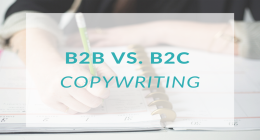Social media is more than just a platform for B2C brands to connect with customers and prospects. It can also be a powerful tool for B2B marketers to showcase their expertise, build trust, and capture leads. But creating and sharing effective B2B social media content requires a different approach than B2C content. In this article, we’ll share some tips to help you test and experiment with different types of B2B social media content and learn from the results.
Know your audience and goals
Before you start creating and posting content, you need to have a clear understanding of who you’re targeting and what you want to achieve. B2B buyers are typically more rational and tend to make more informed decisions than B2C buyers. They want valuable information, solutions, and insights that will help them overcome challenges and achieve their goals. Therefore, your content should focus on addressing their pain points, informing them, and demonstrating your credibility and authority. You should also define a specific goal for each piece of content: B. Increase brand awareness, generate leads, or maintain relationships.
Choose the right platform and format
Not all social media platforms and formats are equally suitable for B2B content marketing. You need to consider where your audience is active, the type of content they prefer, and how to best present your value proposition. For example, LinkedIn is a popular professional network for B2B marketers, where you can share blog posts, case studies, white papers, webinars, and videos. Twitter is a great platform for sharing short, timely updates, news, tips, and opinions. Facebook and Instagram can be used to showcase your brand’s personality, culture, and behind-the-scenes stories. You can also try different formats like infographics, podcasts, live streams, and stories to see what resonates with your audience.
Optimize your content for engagement and conversions
Once you have chosen your platform and format, you need to optimize your content for engagement and conversions. Engagement is how your audience interacts with your content: through likes, comments, shares, clicks, and views. Conversion is when your content leads to a desired action, such as signing up for your newsletter or downloading your e-book. To maximize engagement and conversions, use catchy headlines, images, and captions to grab attention and spark curiosity. Additionally, provide value and relevance to your audience by catering to their needs and interests. Include a clear call to action that encourages the next step. Additionally, use hashtags, keywords, and tags to increase visibility and reach. Finally, track and measure performance using analytics tools and metrics.
Test and experiment with different content types and strategies
The only way to know what works and what doesn’t for B2B social media content marketing is to test and experiment with different content types and strategies. You can test your content using a variety of methods, such as: B. A/B testing, surveys, polls, feedback, and ratings. You can also try different content elements, such as tone, style, length, frequency, and timing. The key is to have a hypothesis, variables, and control group for each test. For example, you could test whether videos or blog posts generate more engagement on LinkedIn, or whether posting in the morning or evening leads to more clicks on Twitter. By testing and experimenting with different content types and strategies, you can learn from the results and optimize your content accordingly.









